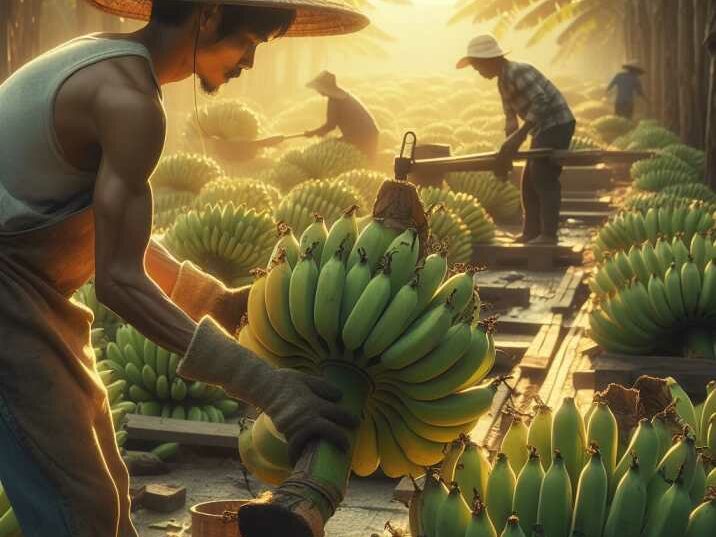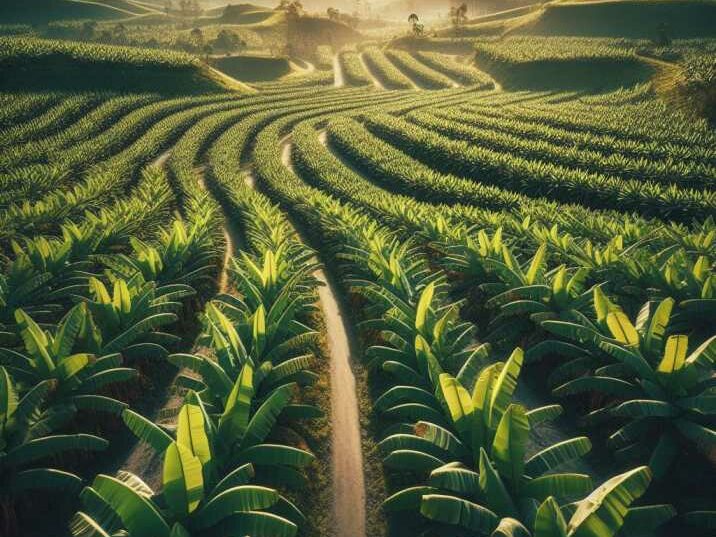Introduction:
Table of Contents
Cavendish bananas are one of the most popular and widely consumed fruits globally. Their sweet taste, convenient packaging, and numerous health benefits make them a favorite snack for many people, including those in the United States. But have you ever wondered where these beloved bananas come from? In this article, we’ll explore the specific countries where Cavendish bananas are most commonly grown, shedding light on the fascinating world of banana production.

Specific Countries are Cavendish Bananas Most Commonly Grown:
Understanding Cavendish Bananas
Cavendish bananas are a cultivar of the banana plant, known scientifically as Musa acuminata. They are prized for their elongated shape, bright yellow color when ripe, and creamy texture. Unlike other banana varieties, Cavendish bananas have a thick skin that protects the delicate flesh inside, making them ideal for shipping long distances without damage.
Top Countries for Cavendish Banana Production
- Ecuador: With its tropical climate and fertile soil, Ecuador is a major player in the global banana market. The country’s extensive banana plantations, primarily located in the provinces of Guayas and Los Ríos, produce millions of tons of Cavendish bananas each year.
- Philippines: The Philippines boasts a rich agricultural landscape conducive to banana cultivation. Regions like Davao, Mindanao, and Northern Mindanao are known for their large-scale banana farms, contributing significantly to the country’s banana exports.
- Costa Rica: Renowned for its commitment to sustainable agriculture, Costa Rica is another top producer of Cavendish bananas. The country’s banana plantations, concentrated in the Limón and Puntarenas provinces, adhere to strict environmental standards while producing high-quality bananas for export.
- Colombia: Colombia’s diverse climate and topography make it an ideal location for banana cultivation. Regions such as Urabá and Magdalena are major banana-producing areas, supplying both domestic and international markets with premium Cavendish bananas.
- Guatemala: As one of the leading banana exporters in Central America, Guatemala plays a significant role in the global banana trade. The country’s favorable growing conditions, particularly in the departments of Izabal and Suchitepéquez, support thriving banana plantations.
Other Notable Banana-Producing Countries
While the aforementioned countries are among the top producers of Cavendish bananas, several other nations also contribute to the global supply. These include Honduras, Panama, Thailand, and India, each with its own unique climate and agricultural practices conducive to banana cultivation.
Factors Affecting Banana Production
Several factors influence banana production in different countries, including climate, soil quality, agricultural policies, and labor practices. Tropical regions with consistent rainfall and warm temperatures provide optimal conditions for banana cultivation, while access to water resources and advanced farming techniques can enhance productivity and yield.

Table of Information Cavendish Bananas Are Most Commonly Grown:
| Country | Primary Banana-Producing Regions | Annual Production (Metric Tons) |
|---|---|---|
| Ecuador | Guayas, Los Ríos | 10.5 million |
| Philippines | Davao, Mindanao, Northern Mindanao | 9.2 million |
| Costa Rica | Limón, Puntarenas | 2.9 million |
| Colombia | Urabá, Magdalena | 2.7 million |
| Guatemala | Izabal, Suchitepéquez | 2.3 million |
Conclusion
In conclusion, Cavendish bananas are primarily grown in tropical regions around the world, with countries like Ecuador, the Philippines, Costa Rica, Colombia, and Guatemala leading the way in production. Understanding the geographic distribution of banana cultivation helps us appreciate the global supply chain that brings these delicious fruits to our tables.
Frequently Asked Questions (FAQs):
- Q: Are Cavendish bananas only grown in tropical countries?
- A: Yes, Cavendish bananas thrive in tropical climates with ample sunlight and rainfall, making countries near the equator ideal for cultivation.
- Q: How many Cavendish bananas are produced annually worldwide?
- A: According to the Food and Agriculture Organization (FAO), global Cavendish banana production exceeds 100 million metric tons per year.
- Q: Can Cavendish bananas be grown in the United States?
- A: While the United States imports the majority of its bananas, some small-scale production occurs in states like Hawaii and Florida, where the climate is suitable for banana cultivation.
- Q: What challenges do banana farmers face in maintaining crop health?
- A: Banana farmers must contend with various pests and diseases, such as Panama disease and banana weevils, which can devastate crops if not properly managed.
- Q: Are there any alternatives to Cavendish bananas?
- A: Yes, there are numerous banana varieties, including plantains, Lady Finger bananas, and Red bananas, each with its own distinct flavor and culinary uses.
